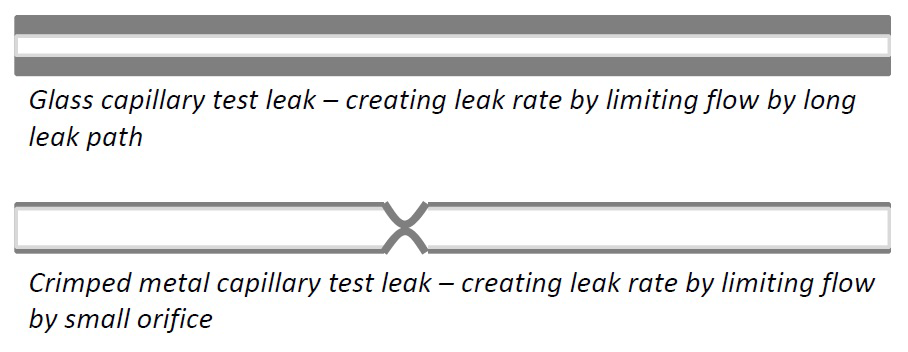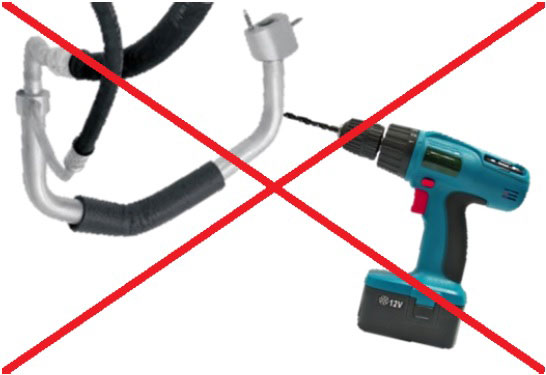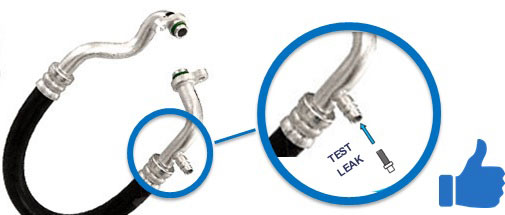How to Properly Calibrate your Leak Testing Process!
Calibrated leaks are very useful for verifying the leak test sequence of a system whose purpose is to pass or fail a part based on accurate leak rate readings. Manufacturing personnel responsible for quality have the daily task to verify a leak test system’s operation and possess the capacity to fail a leaky part by using some type of a reference leak. Frequently, in an effort to do this, the incorrect method is used to build a leaky part (e.g. using a drill to create a “leak”) and subsequently use it as a reference to ensure the leak test system is working correctly. This approach gives a false sense of reliability in the test results of the system.
The following tips will help you to properly use calibrated leaks to verify the proper status of your leak testing setup.
Use glass capillary (non-crimped) leaks

There are two types of test leaks: capillary leaks and permeation leaks. The leak rate of a permeation leak is strongly affected by temperature and should not be used for calibration unless very complex adjustments are made for temperature changes. Diffusion leaks are preferred, as they create the leak rate by diffusion of gas through a long capillary with a very small diameter. Glass capillary leaks are preferred over metal-crimped capillary leaks. Glass capillaries reduce the flow over a long leak path, whereas metal-crimped leaks limit the leak rate by the crimped area acting as an orifice. For the same size leak rate, the opening area of a glass capillary leak is significantly larger than for a metal-crimped leak. The metal-crimped leak, therefore, has a much higher risk of being clogged by the smallest particles of dirt in production areas.
Use certified leaks!
Do not try to create a leaky part for calibration yourself. Some customers have even tried to drill holes into test parts. A certified leak will be built by qualified people at certified companies. The certified test leak will always come with a certificate that proves the proper certification.


Do not use real parts for calibration!
Real parts often do not show stable leak rate behavior. Leak rates in real parts can change due to pressure or temperature changes, leak channels may corrode due to chemical substances used in the production process, and leak channels may be clogged with water after cleaning or use in water bath.
Take the leak detection system design into account!
When calibrating a production leak testing setup, it is important to not only calibrate the leak detection sensor internally, but to take the complete pathway of gas into account. An internal-only leak detector calibration, for example, will not detect if the gas filling station does not properly fill the parts (not to the required pressure level or not at all). It will not detect if the wrong testing gas has been connected to the system or if a sniffer line is clogged in case of a sniffer leak test. Additionally, an internal calibration will not detect if the leak detector is not connected to the leak testing setup at all. A good calibration routine should also detect if any of the testing parameters are not within the required boundaries.
The best way to properly calibrate a leak testing setup is to build a certified leak standard into a production part. Check out our offerings of leak standards that can be used for this application here!
If you need help with your calibration process, don’t hesitate to contact your nearest sales or service representative. They will be happy to support you!
